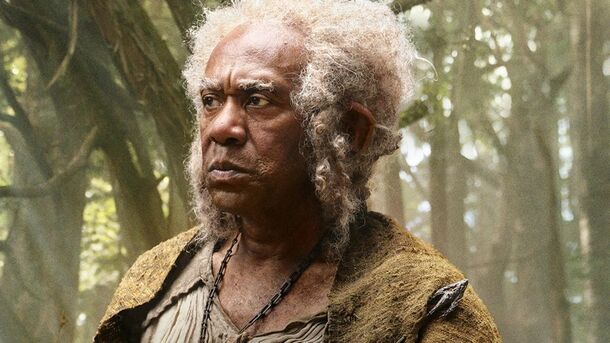The Rings Of Power Vs Books: 5 Biggest Differences

Amazon's Rings of Power is set to bring new life to Middle-Earth and help us return to the wonderful realm we know and love. After the success of the Lord of the Rings and The Hobbit, Middle Earth returns to our screens in the form of The Rings of Power. A show set in a new period, featuring new characters.
Film, TV, and books are entirely separate forms of media. Likewise, any adaptation must come with certain…well…"adaptations." A strict one-to-one retelling can't be feasible due to the different ways we consume media. The Rings of Power is no different. While it is heavily inspired by Tolkien's work and carries Peter Jackson's flair, it is, ultimately, its own thing.
Instead of adapting books as Peter Jackson did, the showrunners J.D Payne and Patrick McKay chose to delve into the lesser-known stories of Tolkien's Legendarium. They took material from The Silmarillion and The Lord of the Rings appendices to tell a relatively new story.
Due to the diverging path the showrunners have taken, The Rings of Power differs from the established canon in multiple surprising ways. While many purists may be disappointed with the changes, many new fans would welcome them. It is impossible to satisfy everyone after all.

Here are some of the biggest differences between the show from the books.
A New Time, A New World
The Rings of Power takes place in the Second Age, which was the time when many significant events occurred. From the forging of the titular Rings of Power to the fall of Numenor. Many of these events are mere world-building that flesh the world in The Lord of The Rings and The Hobbit, but these are key plot points here.
Since the Rings of Power doesn't retell a single book's story but considers many different stories, expect creative liberties to fill out the gaps.
Untold Tales
The Rings of Power introduces many new characters who are entirely new. As a result, this period of Tolkien's history is rather disjointed, told through various stories. However, the showrunners have created new characters which fit seamlessly into events and follow them through their adventures.
The show includes many characters alive during that time, such as Galadriel and Elrond. However, most of the cast is entirely new, featuring Nori Brandyfoot, Bronwyn, Arondir, Halbrand, and many others. Don't expect Aragorn or Frodo to make an appearance, however.
Galadriel
.jpg)
Speaking of Galadriel, she is one of the major characters of the show, and one which is vastly different from the books. In the show, she takes a pragmatic approach to fighting the forces of darkness. Most fans of Tolkien probably remember her as a lithe and fair maiden wearing a gown of white silk. In the show, she trades that in for a sword and armor.
There is no mention of Galadriel participating in the wars in The Silmarillion And The Unfinished Tales. In the books, she does not believe that her people have the power to stop The Dark Lord, Morgoth.
Galadriel's decision to leave Valinor and head for Middle Earth is also different. The show describes her decision to leave so that she could take the fight to Morgoth. However, in the books, Galadriel is one of the Noldor. The Noldor is a group of elves who leave Valinor to retrieve the magical Silmarils.
The Harfoots
Harfoots are a tribe of halfling people who are the ancestors of the Hobbits. They are said to be reclusive and live separately from the other free people of Middle Earth. Harfoots are only briefly mentioned in The Fellowship of the Ring. They are not central to the plot, being cut off from the major events of the world surrounding them.
The show features Nori Brandybuck, a Harfoot, as she gets tangled in the biggest happenings of her age. But, of course, this goes against the books, which have no mention of Harfoots going on any adventures or doing anything unexpected.
The showrunners have stated that the Harfoots were included mostly to add a bit of that "Middle-Earth feel to the show." McKay told Vanity fair, "Really, does it feel like Middle-earth if you don't have hobbits or something like hobbits in it?". It seems that the inclusion is made on purpose for the sake of having relatable characters.

Beardless Dwarf Women
No, this is not a joke. Tolkien has described Dwarf females as having beards just like their male counterparts. However, their hair is not nearly as bushy. Dwarves are a major part of the Rings of Power, and the House of Durin is featured prominently. Princess Disa was one of the characters revealed earlier, and her pictures sent purists into a meltdown.
Disa is shown without a beard which goes against the pre-established canon of the franchise. Dwarven women have been demonstrated with beards in media, but that tends to differ. Ultimately, it is not that big of a difference.